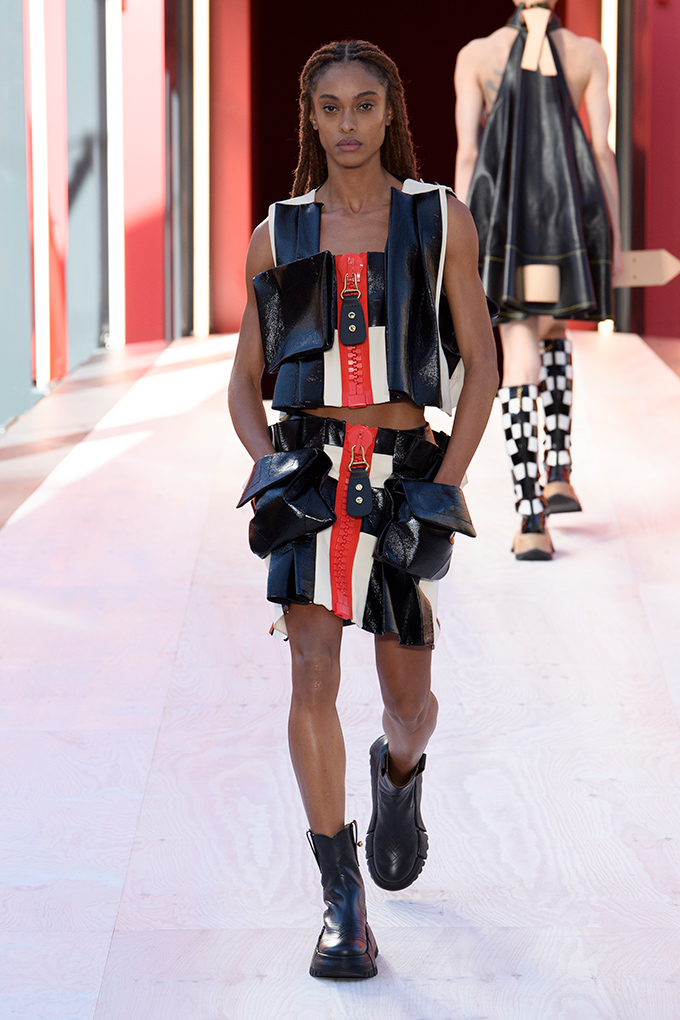We were back in the Cour Carrée for Louis Vuitton. Nicolas Ghesquière invited his longtime friend French artist Philippe Parreno to create an installation, and together with the Hollywood production designer James Chinlund (of The Batman fame) they created a set that felt a little as if a spaceship—a distant cousin of the Nope UFO, perhaps—had landed in the heart of Paris and the aliens had set up a fun fair for locals to see the special attraction.
“It’s the first time I designed a collection in dialogue, in correspondence, with someone,” Ghesquière said at a preview, adding that Parreno’s sculpture was in fact “kind of a flower, a carnival flower.” Its massive proportions inspired the supersizing that happened on the runway. The cloche clés key holder that accessorises many of the brand’s bags was enlarged, as were its Vachetta leather luggage tags, and the wallet that Ghesquière wears on a chain attached to a belt loop became a portfolio that the models clutched to their hips. All clever ideas.
Something similar was happening with the clothes. You might recognise the giant zipper pulls on HoYeon Jung’s opening look from the fall 2015 jeans that fashion types still proudly wear seven years later, a grail item if ever there was one. “Louis Vuitton is not anymore a leather goods company; it’s a fashion company also, and we’re very proud, after all these years, of this result,” said Ghesquière.
As for those zippers, Ghesquière reported that they’re the largest ever manufactured, and the process of zooming and exaggerating one element of a garment led to the scaling up of other parts as well. Which explains the hyperbolic neckline and hips of Jung’s crop top and skirt, and the oversized straps dangling from the inner hems of vests and jackets, like sportswear panniers.
Something deeper was at work than just proportion play, though. Ghesquière said he was using scale to disrupt the codes of femininity. “‘Pretty tough,’ that was something we were talking about, and ‘threatening beauty’. The idea was to look at something pretty, something sweet, and to see in those elements what strength they have,” he explained. Can a bow be threatening? An Edie Sedgwick baby doll with a bit of tulle and lace? Debatable, but the spirit of the collection, with its easy-walking boots and utilitarian external pockets, feels right for this moment.
Ghesquière’s fabric development was impressive. The tweed of a minidress, for example, was first printed, then embroidered. “There is always that game of what is real and what is manipulated,” he explained. And the party pants were woven first with elastic to give them their wavy, three-dimensional texture, then printed. The lace tights, made on a Raschel machine and then studded with crystals, were something new too. “Being with Philippe and working through the eyes of an artist,” Ghesquière said, “sometimes I had the feeling we were a little childish. I think I was maybe more free to break some boundaries for myself.”

1 / 20

2 / 20

3 / 20
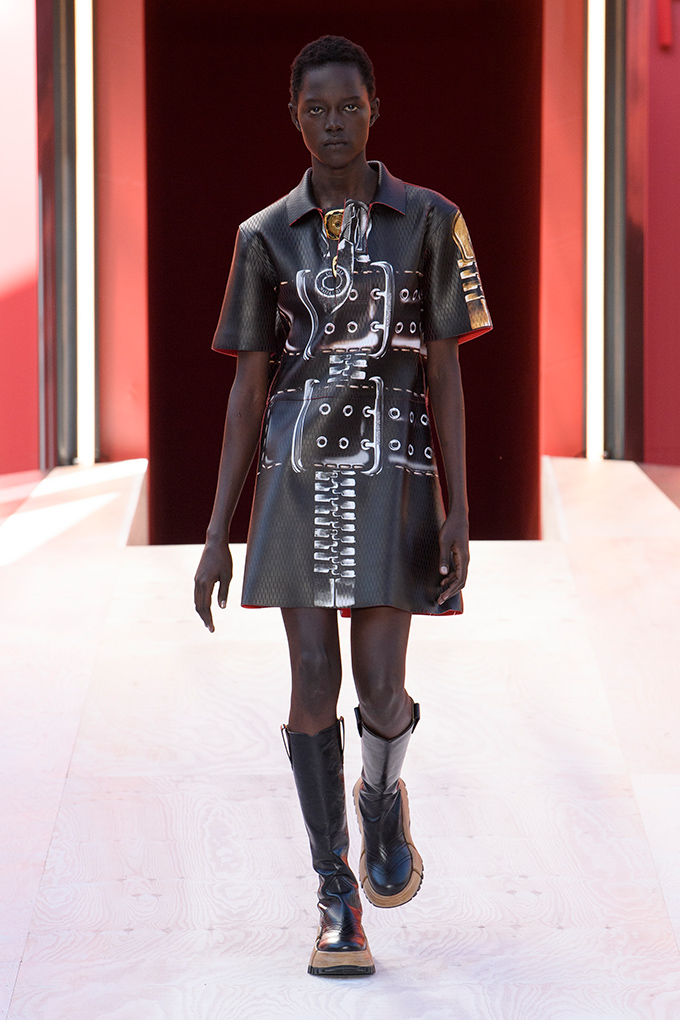
4 / 20
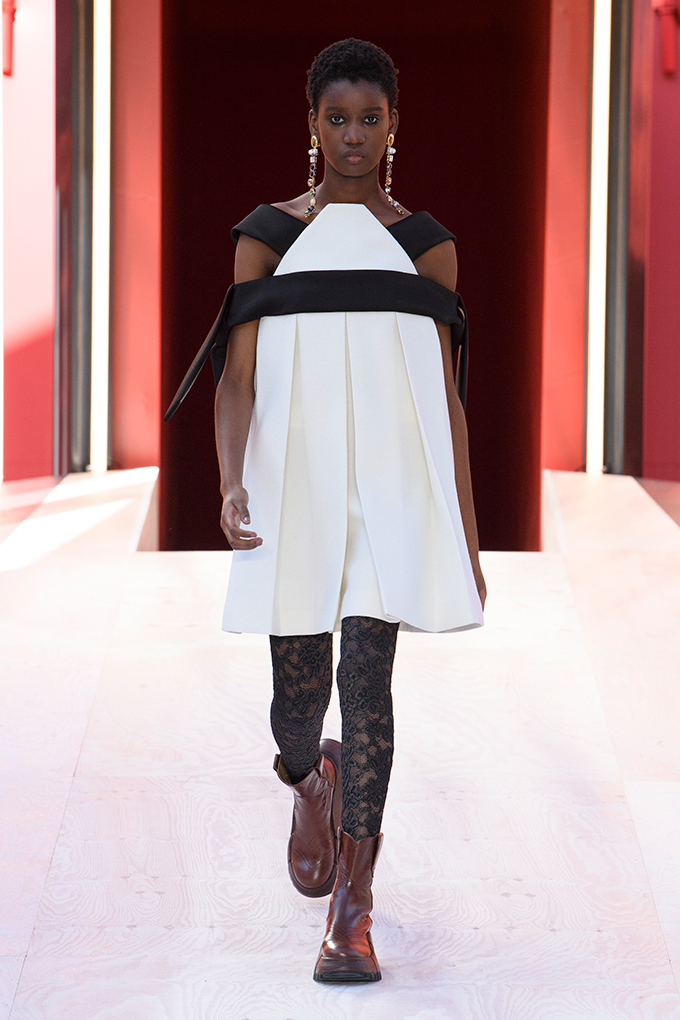
5 / 20

6 / 20

7 / 20
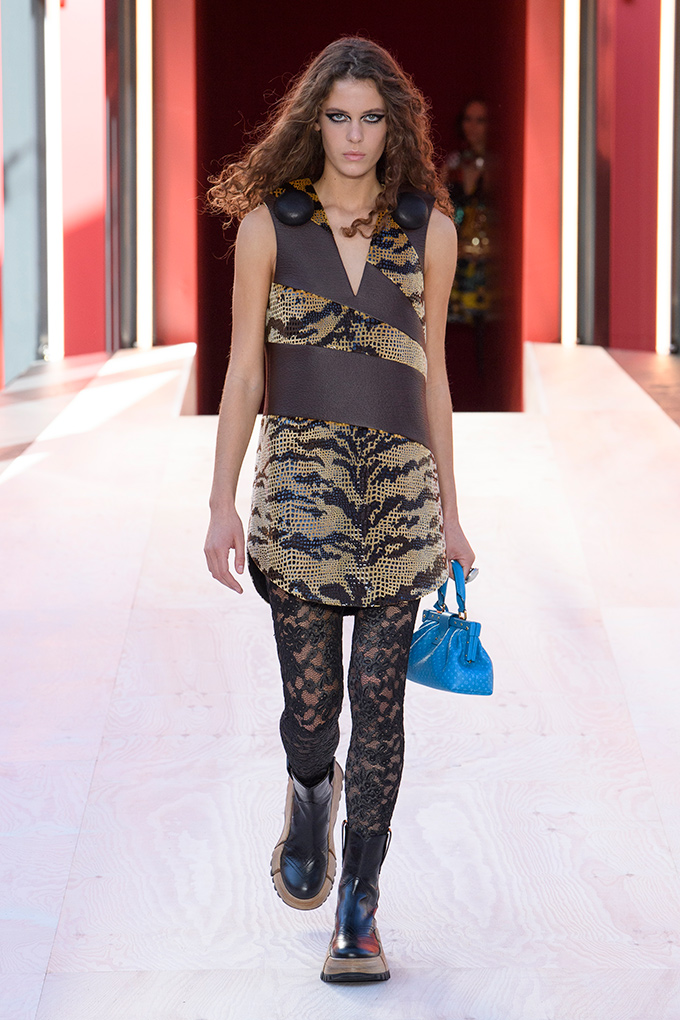
8 / 20

9 / 20
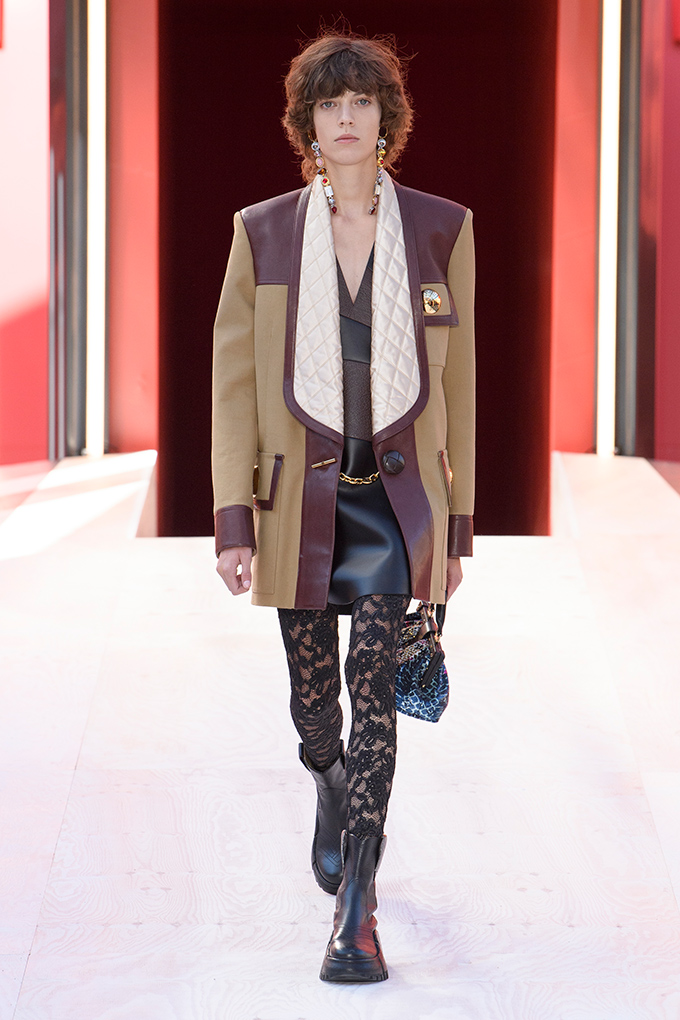
10 / 20

11 / 20
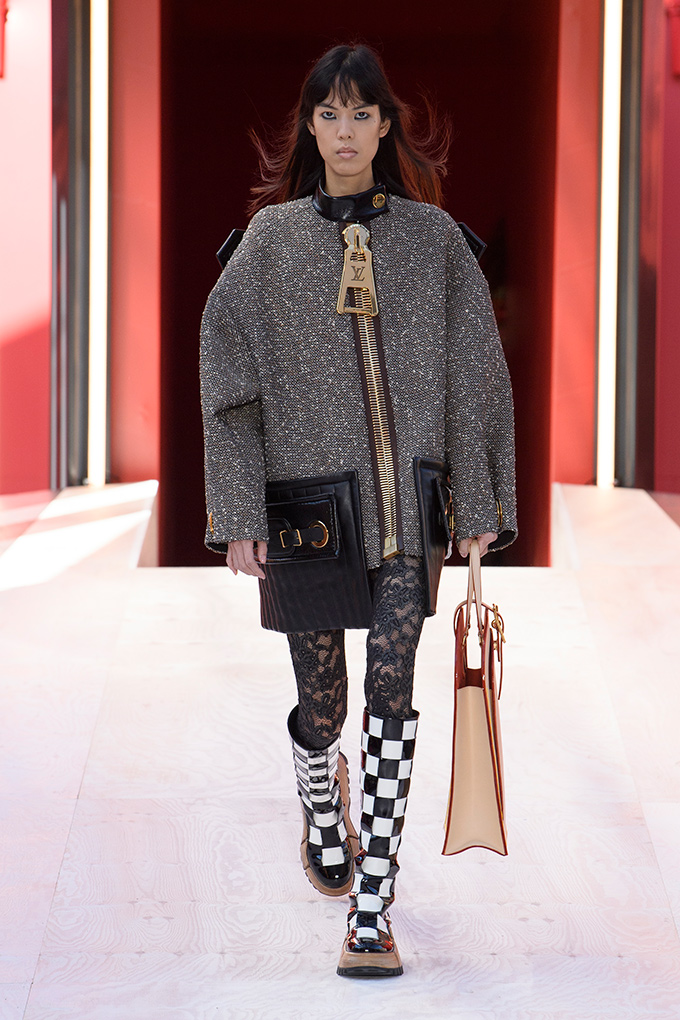
12 / 20

13 / 20

14 / 20
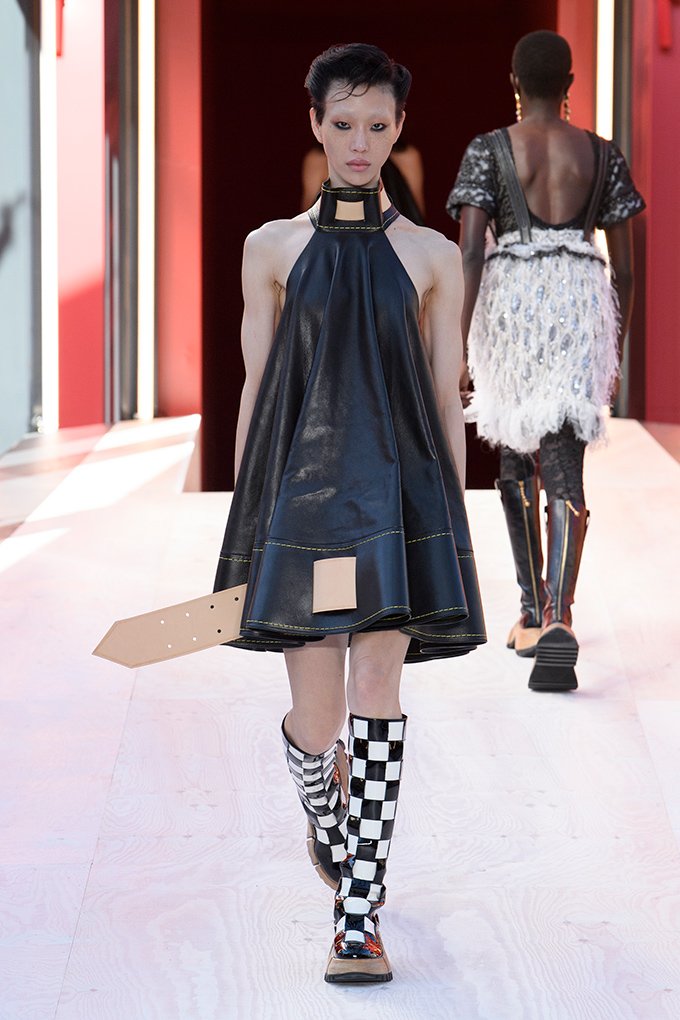
15 / 20

16 / 20

17 / 20

18 / 20
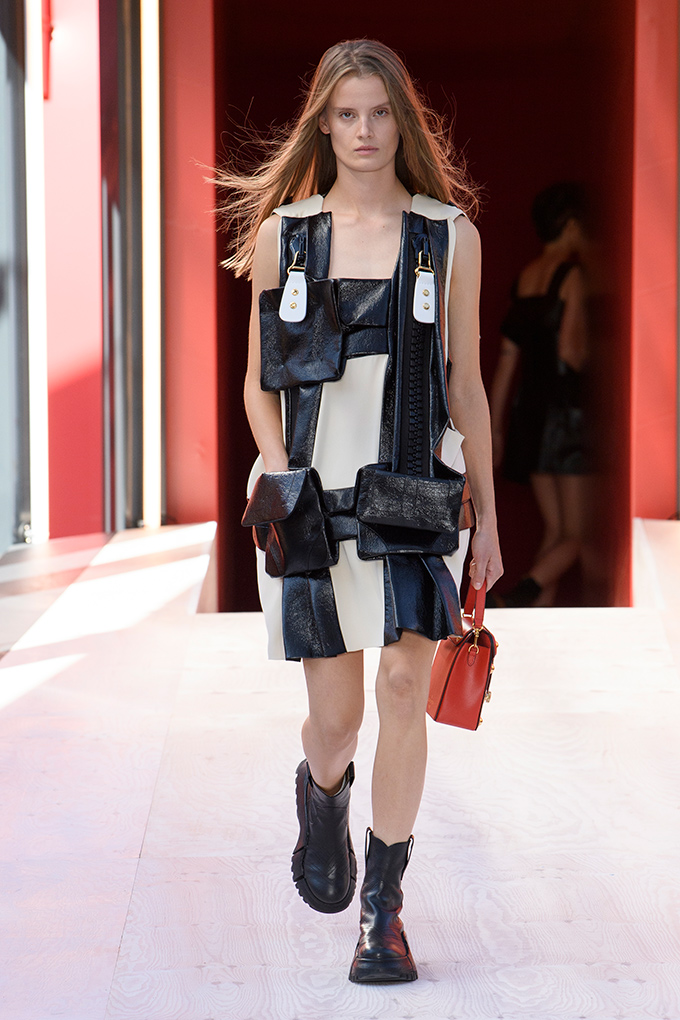
19 / 20


